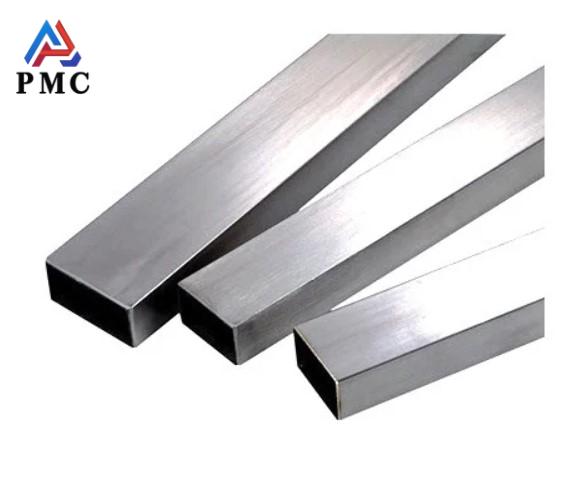
Rectangular Tube vs Round Tube
Steel tube is a common material in industrial manufacturing and construction, with rectangular and round tubes being particularly common. These two types differ significantly in appearance, performance, specifications, and application scenarios. This article provides a detailed comparison to help you choose the right material for your needs.
Performance comparison
1. Stress resistance: Each has its own merits
The four sides of the rectangular tube are straight lines, which can evenly distribute the pressure when subjected to stress, so it has strong compressive resistance. In construction, it is often used to build load-bearing structures and can steadily bear the weight of the superstructure.
Due to the structural characteristics of the round tube, when it is under pressure, the pressure will be evenly distributed along the circumference, making it better able to resist pressure and have higher strength. For example, when the oil pipeline is buried deep underground and bears the pressure of the soil above, the structural advantages of the circular tube can be fully utilized to ensure the stable operation of the pipeline.
2. Bending performance: different advantages
The unique structure of the rectangular tube enables it to maintain its shape when subjected to external forces and has good bending resistance. In mechanical manufacturing, when a stable frame needs to be built to support the operation of equipment, rectangular tubes come in handy. They can effectively resist bending forces caused by equipment vibration and other factors. The curved shape of a round tube makes it more flexible when subjected to bending forces, allowing it to better withstand external forces. In applications where pipes frequently bend, such as automotive exhaust pipes, round tubes can better adapt to the bending stresses caused by road bumps during driving.

Specifications vary greatly
Rectangular tubes are available in a wide range of sizes, from smaller to larger side lengths, with a variety of wall thicknesses. Common side length combinations include 20×40mm and 50×100mm, with wall thicknesses ranging from 0.5-25mm. We can also customize non-standard specifications to meet diverse project requirements.
Round tube specifications are typically expressed in terms of outer diameter and wall thickness. Outer diameters range widely, from extremely thin to thick, and wall thicknesses also vary accordingly. Standard round tube outer diameters include 21.3mm and 48.3mm, with wall thicknesses ranging from 1-10mm. However, compared to rectangular tubes, round tubes offer relatively limited variations in shape and specifications, making custom designs more challenging.
Application fields revealed
1. Rectangular Tubes
Construction: Commonly used in building structural frames, their strong bending resistance in specific directions effectively supports buildings and ensures structural stability. In large-span structures like factories and gymnasiums, rectangular tube beams can reduce the number of support columns and improve space utilization.
Machinery: They can be customized to suit the shape and load requirements of the equipment, providing precise support. For example, rectangular tubes can be used in automated production line equipment frames, allowing for flexible assembly and adaptability to complex equipment layouts.
2. Round Tubes
Fluid Transport: Round tubes have smooth inner walls, providing low resistance to fluid flow, making them ideal for transporting water, oil, and gas. They are widely used in urban water supply networks and long-distance oil and gas pipelines, reducing energy consumption and ensuring efficient transportation.
Decoration: They are often used as decorative materials for railings and handrails, offering a sleek, rounded appearance and a refined aesthetic. Railings in parks and bridges often utilize round tubes, ensuring safety while enhancing overall aesthetics.
Cost-effective choice
1. Rectangular tubes: Balancing performance and cost
Rectangular tubes offer excellent bending resistance and are suitable for applications requiring high strength. However, due to the complex processing and high technical requirements of the equipment, they are relatively expensive. However, different thicknesses can be flexibly selected to balance cost and performance. For example, thinner tubes for interior decorative frames can meet basic needs while reducing costs.
2. Round tube: economical and practical choice
Round tubes are affordable, and their bending resistance is sufficient for common applications. For example, they are suitable for simple guardrails, keeping costs under control and offering excellent value for money. Furthermore, their simple and efficient production process contributes to their low price.
Read more: Rectangular Tube Sizes
- 【Prev】 : Carbon Steel Pipe vs Seamless Steel Pipe
- 【Next】 : Introduction of Mild Steel ERW Pipe


